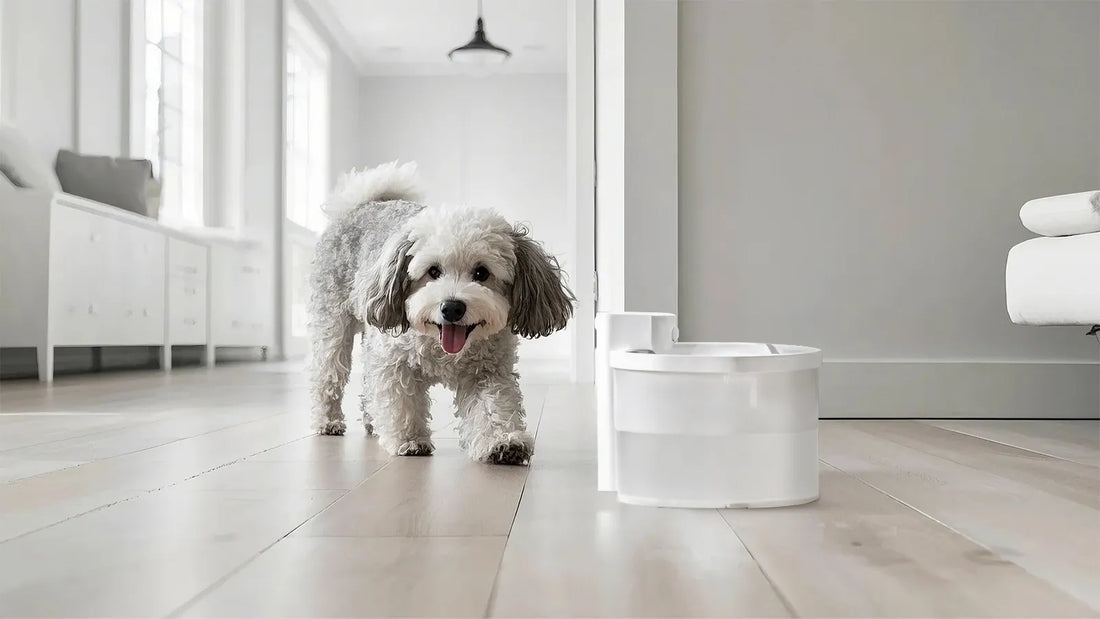If you've ever found yourself asking, 'Why won't my dog eat out of her bowl?' you're not alone. This common concern can be frustrating for pet owners, but understanding the underlying causes can help you address the issue effectively. Dogs, like humans, have preferences and sensitivities that can influence their eating habits. Let's dive into the possible reasons and explore solutions to encourage your furry friend to eat from her bowl again.
1. The Bowl Itself Might Be the Problem
One of the first things to consider is the bowl your dog is using. Dogs can be particular about the material, size, or shape of their bowls. For example, some dogs may dislike the sound of metal bowls, while others might find plastic bowls unappealing due to lingering odors. Additionally, the height of the bowl could be a factor—some dogs prefer elevated bowls to reduce strain on their necks.
2. Environmental Factors Play a Role
Your dog's eating environment can significantly impact her willingness to eat from her bowl. Loud noises, high-traffic areas, or the presence of other pets can create stress or distractions. Dogs are creatures of habit, and any changes in their surroundings can disrupt their routine. Try moving the bowl to a quieter, more secluded area to see if it makes a difference.
3. Health Issues Could Be the Culprit
If your dog suddenly stops eating from her bowl, it could be a sign of an underlying health issue. Dental problems, gastrointestinal discomfort, or even infections can make eating uncomfortable. If you notice other symptoms like lethargy, vomiting, or changes in behavior, it's essential to consult your veterinarian to rule out any medical conditions.
4. Your Dog Might Be Bored with Her Food
Just like humans, dogs can get bored with the same food day after day. If your dog is refusing to eat from her bowl, it might be time to switch up her diet. Introducing new flavors or textures can reignite her interest in mealtime. However, make any dietary changes gradually to avoid upsetting her stomach.
5. Behavioral Factors to Consider
Behavioral issues can also contribute to your dog's reluctance to eat from her bowl. Anxiety, stress, or even past negative experiences with the bowl can play a role. Positive reinforcement, such as offering treats or praise when she eats from the bowl, can help create a more positive association.
6. The Timing of Meals Matters
Dogs thrive on routine, and the timing of their meals can influence their eating habits. If you've recently changed your dog's feeding schedule, she might be adjusting to the new routine. Consistency is key—try to feed her at the same times each day to establish a predictable pattern.
7. The Bowl's Cleanliness Could Be a Factor
A dirty bowl can be a major turn-off for your dog. Residual food particles, bacteria, or even soap residue can make the bowl unappealing. Make sure to clean your dog's bowl thoroughly after each meal using hot water and mild detergent. Avoid using harsh chemicals that could leave behind unpleasant smells or tastes.
8. Your Dog Might Prefer Eating Elsewhere
Some dogs simply prefer eating in different locations. If your dog refuses to eat from her bowl, try offering her food in a different spot, such as on a mat or even outside. Experimenting with different feeding locations can help you identify her preferences.
9. The Type of Food Could Be the Issue
The type of food you're offering might not be appealing to your dog. Dry kibble, wet food, or raw diets each have unique textures and flavors. If your dog is turning her nose up at her bowl, consider trying a different type of food to see if it sparks her interest.
10. Age-Related Changes Can Affect Eating Habits
As dogs age, their eating habits and preferences can change. Older dogs may have difficulty chewing hard kibble or might prefer softer foods. Additionally, age-related health issues like arthritis can make it uncomfortable for them to bend down to eat from a bowl. Adjusting the type of food or the height of the bowl can help accommodate these changes.
Understanding why your dog won't eat out of her bowl is the first step toward finding a solution. By considering factors like the bowl's design, the feeding environment, and your dog's health and preferences, you can create a more enjoyable mealtime experience for your furry friend. Remember, patience and observation are key—every dog is unique, and what works for one might not work for another. With a little effort and creativity, you can help your dog feel comfortable and excited about eating from her bowl again.













